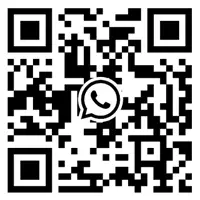
Reactive special adhesive industry market size analysis and development trend forecast report
Release time:
2024-09-11
According to GIR (Global Info Research), in terms of revenue, the global reactive special adhesive revenue in 2023 is about $1 million, and is expected to reach $1 million in 2030, with a compound annual growth rate of % from 2024 to 2030. At the same time, the global sales volume of reactive special adhesives in 2023 is about, and it is expected to reach 2030. In 2023, the Chinese market size is about one million US dollars, accounting for about % of the global market, while the North American and European markets account for % and % respectively. In the next few years, China's CAGR will be %, the United States and Europe CAGR will be % and % respectively during the same period, the Asia-Pacific region will play a more important role, in addition to China, the United States and Europe, Japan, South Korea, India and Southeast Asia are still important markets that cannot be ignored.
Reactive special adhesives are specific classes of adhesives that have unique properties and are formulated for special applications. These adhesives are part of a wider range of reactive adhesives, which means they undergo chemical reactions during the bonding process, resulting in a strong and long-lasting bond.
Reactive specialty adhesives are unique in their tailored formulations to meet specific requirements and challenges in niche applications. Their chemical composition and curing mechanisms are designed to meet specific bonding needs, such as extreme temperatures, harsh environments, challenging substrates or specific performance standards.
The term "specialty" indicates that these adhesives are not standard, one-size-fits-all solutions, but are targeted at specific industries and applications where traditional adhesives may not meet requirements.
Some examples of reactive specialty adhesives include:
High-temperature adhesives: These adhesives are designed to withstand high temperatures and are used in applications where other adhesives fail due to heat.
Flexible adhesives: Designed to provide the flexibility to bond components, making them suitable for materials that withstand thermal expansion and contraction.
Conductive adhesives: These adhesives facilitate electrical and mechanical bonding and are commonly used in electronics and microelectronics applications.
Medical grade adhesives: Adhesives formulated specifically for medical and healthcare applications with biocompatibility, resistance to sterilization and skin friendly properties.
Optical adhesives: Special adhesives with high optical transparency and low refractive index, commonly used in optical, lens and display applications.
Uv curing adhesives: Adhesives that cure quickly when exposed to UV light are ideal for applications that require fast curing and precision bonding.
The market for reactive specialty adhesives is diverse and its growth is driven by industry advancements and technological developments. Some of the key industries that use these adhesives include:
Electronics and Semiconductors: Specialty adhesives are used in electronics and semiconductor manufacturing to bond sensitive components and ensure reliable performance in challenging environments.
Aerospace and Defense: The aerospace industry relies on specialty adhesives to bond structural components, composites and seal critical components.
Medical and Healthcare: Specialty adhesives are essential for medical devices, surgical applications and healthcare products that require biocompatibility and resistance to sterilization.
Automotive and Transportation: Specialty adhesives are used in automotive manufacturing for applications ranging from bonding automotive parts to sealing components.
Optical and display: Industries involving optical, display and photonic applications often use specialty adhesives to achieve specific optical properties.
As technology evolves and the industry seeks higher product performance and reliability, the demand for reactive specialty adhesives is expected to continue to grow. Manufacturers of these adhesives may focus on research and development to create innovative formulations that meet the diverse and changing needs of niche markets and applications.
This paper studies the sales volume and sales revenue of reactive special adhesives in the global market, major regions and major countries, and also focuses on the global competition situation of major manufacturers (brands), sales volume, price, revenue and market share of reactive special adhesives.
Based on the historical situation of the past five years (2019-2023), the overall scale of global reactive special adhesives, the scale of major regions, the scale and share of major enterprises, the scale of major product categories, and the scale of downstream main applications were analyzed in the past few years. Scale analysis includes sales volume, price, revenue and market share. In view of the development prospects of reactive special adhesives in the next few years, this paper predicts that by 2030, it mainly includes global and major regional sales and revenue forecasts, classified sales and revenue forecasts, as well as sales and revenue forecasts for major applications of reactive special adhesives.
Latest News



